The Schwarzlose machine gun was developed by Andreas Schwarzlose starting in 1902, as an attempt to produce a machine gun simpler and less expensive than the guns then on the market. Schwarzlose achieved this end by using a delayed blowback action, very unusual in machine gun designs. By using a heavy bolt and a lever-delaying system, the design was able to avoid the necessity of a gas or recoil system and its attendant extra components.
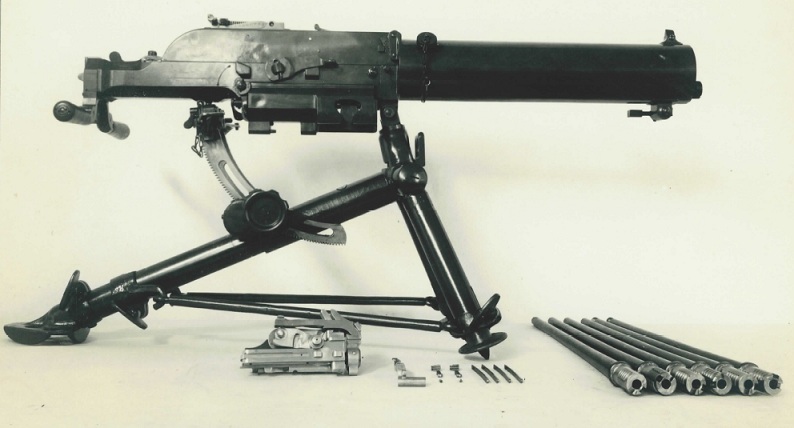
The Schwarzlose uses a toggle lock that looks at a glance similar to a Maxim or Luger lock, except that this toggle does not act to lock the bolt. Instead, the toggle must be broken and folded before the bolt can travel rearward, thus delaying it for a moment. This delay is long enough to allow chamber pressure to drop to a safe level (assuming everything is done right). This does require use of ammunition with a specific pressure curve, as overpressure ammunition will cause the bolt to open early and rupture cases while underpowered ammunition will simply fail to fully cycle the action. The system was designed with a heavy recoil spring and a relatively short barrel (20.75 inches, meaning that the bullet would take less time to exit the barrel and pressure to drop). This meant that the gun had significant muzzle flash (hence the large flash suppressor) and also required an oil pump to lubricate cartridges to prevent extraction problems. The pump oil tank held a half liter of oil, which was good for about 4500 rounds of firing.
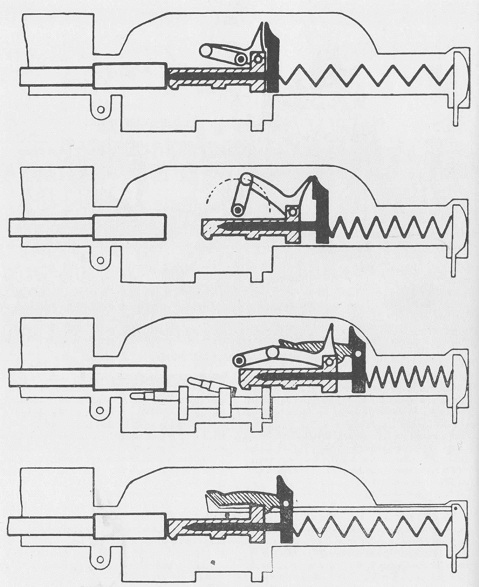 [/caption]
[/caption]
Along with those disadvantages, the gun did have some things working in its favor. Since the barrel did not move (like most contemporary recoil-operated actions), it was simpler to incorporate and seal the cooling water jacket. It also had a very sturdy and reliable feed system. In 1912, the design was modified to use a heavier bolt and spring (and slightly modified lever angle in the toggle), thus increasing the time before opening, which reduced the chamber pressure when it did open, which in turn allowed cartridges to reliably extract without being oiled. The most obvious visual distinction between the 1907 and 07/12 guns is the rounded hump on the from of the 1907 receiver, where the 1912 variation was square at the front of the receiver.
The gun loads from below and right of the receiver, and ejects empty cases out the lower right of the receiver. Loading the gun when empty requires inserting a belt and manually cycling the action three times while holding pressure on the loose end of the belt to bring the first cartridge into firing position. The feed mechanism consists of a gear-like wheel that holds the cartridges and rotates them up to the chamber and then down to the ejection port. Firing is done by depressing the central dual triggers between the gun’s handles. There is a safety located between the triggers, which must be held to the left by one thumb while firing.
History
The Schwarzlose was the standard heavy machine gun of the Austro-Hungarian army during World War 1, and was also adopted by the Czechoslovakian, Dutch, Serbian, Romanian, Bulgarian, Turkish, and Swedish armies. Italy captured a significant number of the guns, and used them both during and after WWI. Dutch and Czech Schwarzlose guns were chambered for 8×57 Mauser, while the Swedes used them in 6.5x55mm, and the standard Austrian chambering was 8x50R (later changed to 8x56R). Some guns were build in 6.5x54mm for Greece, but these were appropriated by the Austrian government when war broke out in 1914.
The Steyr company in Austria purchased the manufacturing rights for the gun in 1905, and built them until 1918. In 1931, Austrian guns were modified to use the new 8x56R cartridge, which provided a significantly higher muzzle velocity (2300fps, instead of about 1900-2000 with the 8x50R). This was done by rechambering the existing barrels. The British company Kynoch also built the Schwarzlose under license as the Kynoch Machine Gun. A number of other smaller-production variants were also made, including cavalry and aircraft guns.
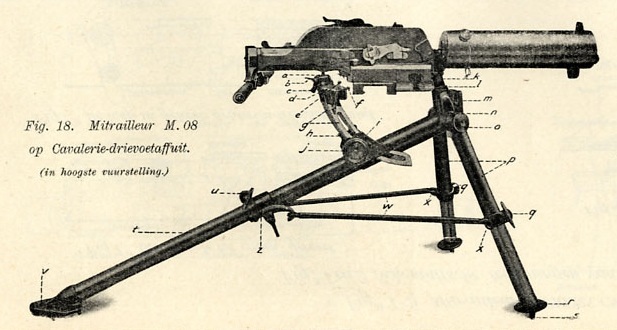
We have three original manuals for the Schwarzlose, which you can download either here or on the Schwarzlose 1907 and 07/12 page in the Vault:
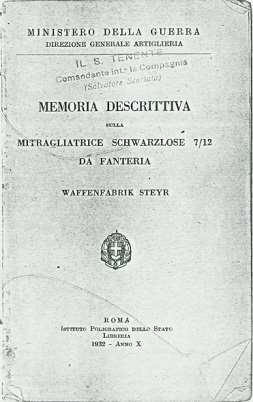
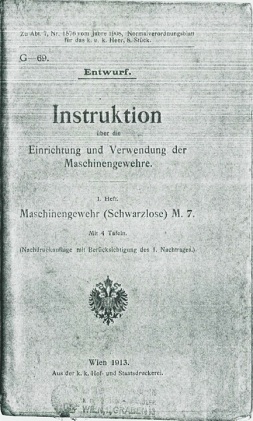
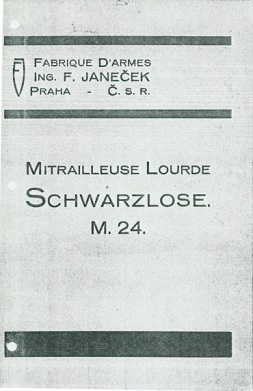

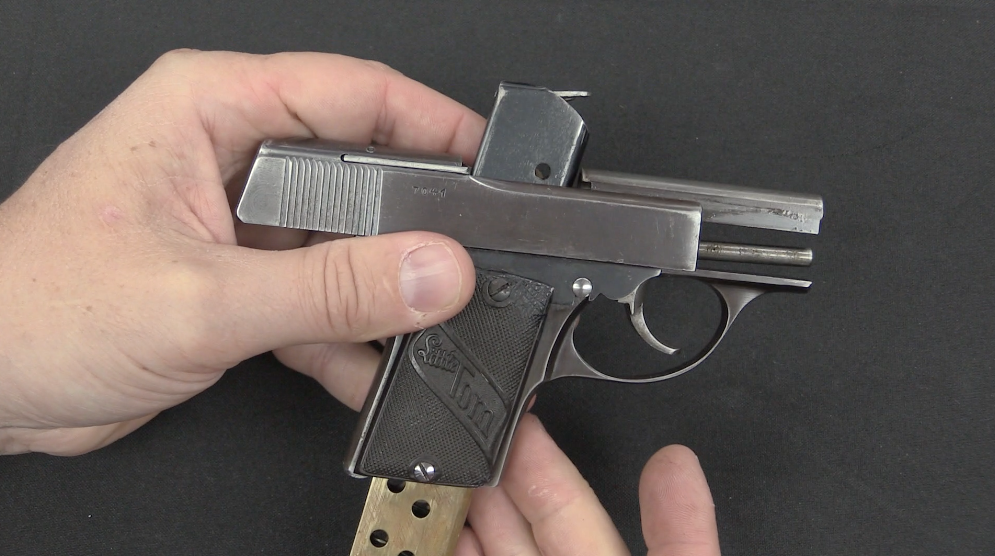
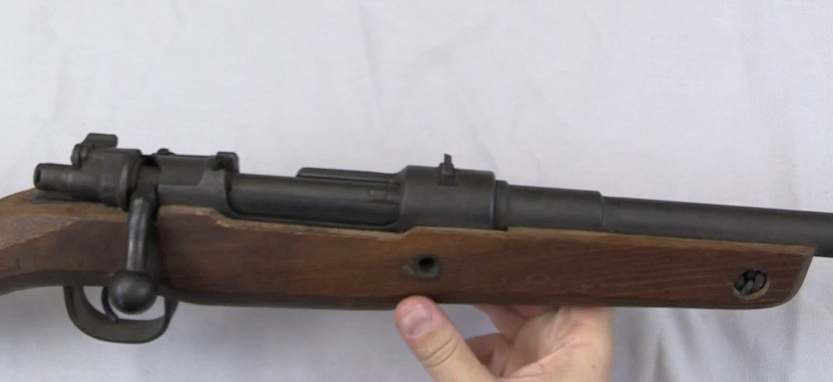
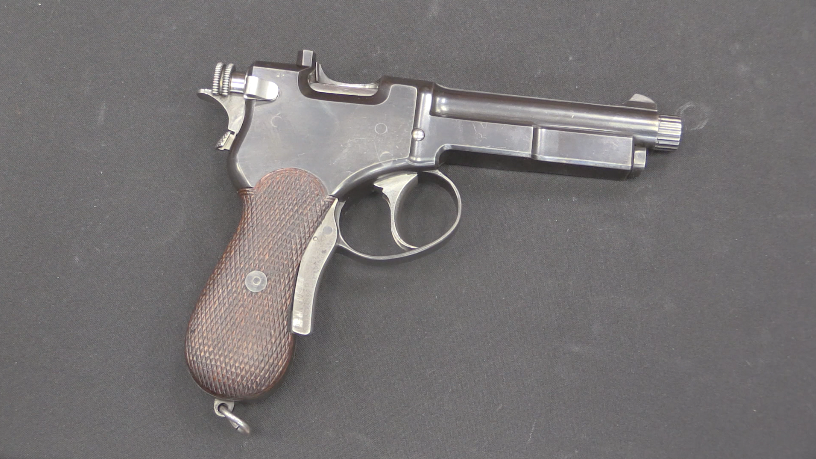
Great write-up on one important (even if a bit unsung) Great War machine gun, even if not-so-good for Otto Prohaska! Thanks for posting.
I was under the impression that the Dutch Schwarzlose guns were chambered in 6,5x54R, as per their Mannlicher rifles and carbinies. Some of the Romanian guns must have chambered for the same round.
Off topic: did you received my e-mail on the Charola y Anitua and other Spanish oddities?
The Dutch machine guns originally were in 6.5 mm. After WW1 there was the impression that indirect long range machine gun fire was the way to go. Italy, Sweden and Norway introduced 8 mm machine gun cartridges to thos end. The Dutch chose a 8×57 rimmed catridge and converted their machine guns for it.
I’m pretty sure that the Greek army received some of these machnine guns.They were the only available machine guns in the greek inventory during the Balkan wars .They also saw action during : WWI ,the campaign in Ukraine (1919),the campaign in Asia Minor (1919-22) and even WWII ,where the remaining Schwarzlose machine guns were used in pillboxes at the Metaxa line fortifications I have seen photos of at least 2 Schwarzlose machine guns on display ,one at the Athens war museum and another one at the Evelpidon(miltary cadet)school museum.
“The Dutch chose a 8×57 rimmed catridge and converted their machine guns for it.”
Im pretty sure all dutch 8×57 mm Schwarzlose MG’s they used up until ww2 where captured german ww1 variants, a lot of germans retreated trough the (from belgum) Netherlands, and they had to surrender their arms at the border, the dutch just put them in stock, only to get them out at the outbreak off ww2. ( a lot of them malfunctioned when used in ww2, lack of care during storage.)
No. The Dutch 8x57R (Cartridge No. 23) was a local design.
Hum ok, thanks for the info, anny idea what happent to the captured german ww1 stock? did they re chamber them? I have read in multiple sources that a lot of the second line Mg’s where vintage german on the outbreak of ww2.
Not quite my specialty, but a bit of digging* turned up the following:
A total of 912 MG08 were interned (not technically “captured”) in the manner you described; as the versailles treaty made returning them impossible, they were bout in 1925.
The guns stiill in useable condition (594) were adopted as “Mitrailleur M.25”, and re-chambered to 8x57R, to simplify ammunition supply.
*involving a book title actually didn’t get quite right, Google, the Dutch Wikipedia, and the Wayback Machine, because the page I found the numbers on is down. It didn’t help that my grasp of Dutch is somewhat tenuous. 🙂
nice digging! thanks, it seems i messed up some facts. thanks for taking the time to find out the real deal!
One qeastion – why, in Your oppinion, the oiler and the reservoir for lubricating cartridges vas left on the model 07/12 – did it still vont work properly vith dry cartridges, or this was left to be sure?
I don’t know for sure, but my guess would be that it remained useful for operating with less than perfect ammunition.
There is also another one M-1907-12 complete with tripod and flashider in ΚΕΤΘ Αυλωνα (Avlona, armored troops’ training center nearby Athens), outside of the HQ barracks.
How much would a gun and tripod be worth on the current market with a de activation cert?
Thanks
Sorry, but I have no idea what going prices are in Europe.
@How much would a gun and tripod be worth on the current market with a de activation cert?
Depends –as always – on the condition and – if we talk about European deactivations – WHERE the deactivation has been made. German, czech and still the french deactivations are rather „modest“ in comparison to e.g. the British deacts.
A couple of thes guns have been sold some years ago for (if I remember right) about 3000 USD. These guns were altered Austrian Schwarzlose (extended jacket), left by the Italians in Libya. (The story was told by the guy who sold them..)
So a good and COMPLETE Schwarzlose with a COMPLETE mount is rather rare on European auction platforms, so I would start such an auction e.g. on egun at 3500 Euro…….
The Schwarzlose I have is complete with tripod and has a deactivation certificate from the Birmingham (UK) company.
I am looking to sell complete, any suggestions on where I should go to sell?
Many thanks.
So, I suppose the Schwarzlose is in the UK now.
Try to sell it there for two reasons: British deacts are more popular in the UK, than in any other area within the European Union, simply because British deactivation regulations are pretty strict. The second reason is “customs & transport”. British customs may be a topic, also if the transhipment is within the Union and – which is even more relevant – many European postal services and shippers refuse to transport weapons, and they often don´t make any distinction between guns and deacts.
A relevant platform for you to sell it could be e.g.: http://www.milweb.net/classifieds.php?type=16
Best Regards
Despite the frequent published references to the short barrel typical of the Austro Hungarian issue Schwarzlose M7 and M7/12 it can be inferred from comments in Chinn’s vol. 1 and from what one can glean from photographs that the M7/12 could function properly with a barrel of conventional length and that guns sold to foreign purchasers are often seen with these longer (24 inch?) barrels. I have seen photos of Dutch and, I believe, Greek guns with long barrels, and evidently the Czech guns were also so fitted. What about the Swedish guns? Comments?